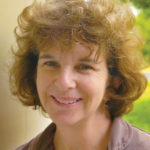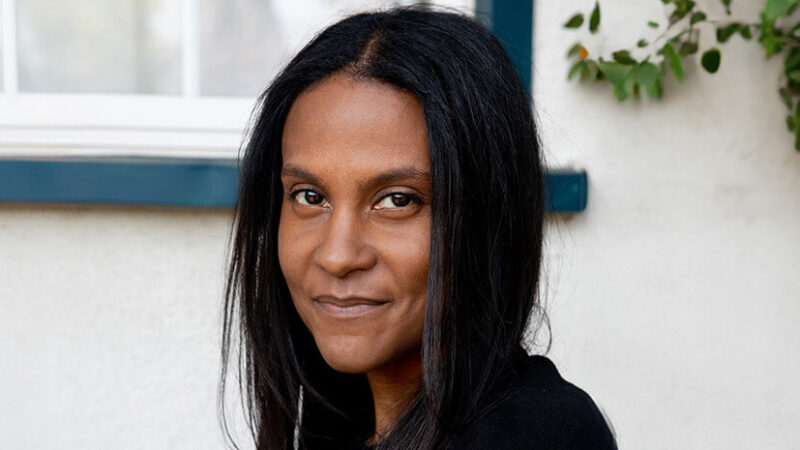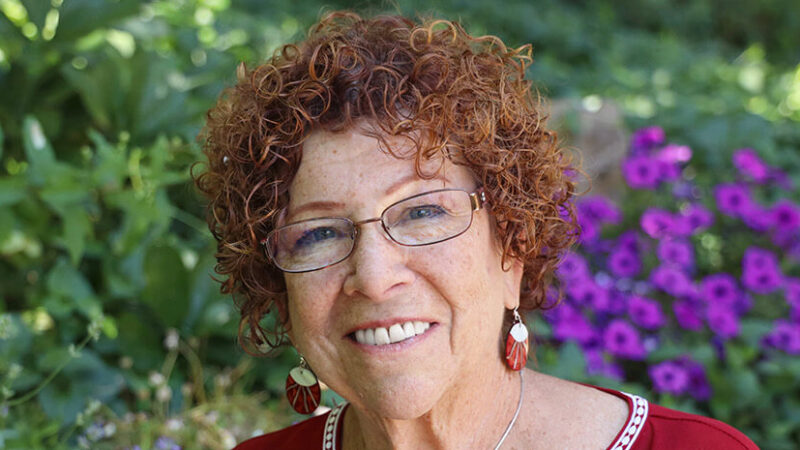-
E117: The Real Work: Letting Go from Within
Michael Singer — October 2, 2025
True spirituality isn’t about mystical experiences or lofty ideals—it’s about honestly facing...
-
Once More: Reflections on Reincarnation and the Gap Between Lives
Tami Simon — September 26, 2025
In this special reflection episode of Insights at the Edge host Tami Simon looks back on her...
-
Honey Tasting Meditation: Build Your Relationship with Sweetness
There is a saying that goes “hurt people hurt people.” I believe this to be true. We have been...
Written by:
Amy Burtaine, Michelle Cassandra Johnson
-
Many Voices, One Journey
The Sounds True Blog
Insights, reflections, and practices from Sounds True teachers, authors, staff, and more. Have a look—to find some inspiration and wisdom for uplifting your day.
Standing Together, and Stepping Up
Written By:
Tami Simon -
The Michael Singer Podcast
Your Highest Intention: Self-Realization
Michael Singer discusses intention—"perhaps the deepest thing we can talk about"—and the path to self-realization.
This Week:
E116: Doing the Best You Can: The Path to Liberation -
Many Voices, One Journey
The Sounds True Blog
Insights, reflections, and practices from Sounds True teachers, authors, staff, and more. Have a look—to find some inspiration and wisdom for uplifting your day.
Take Your Inner Child on Playdates
Written By:
Megan Sherer
600 Podcasts and Counting...
Subscribe to Insights at the Edge to hear all of Tami's interviews (transcripts available, too!), featuring Eckhart Tolle, Caroline Myss, Tara Brach, Jack Kornfield, Adyashanti, and many more.
Most Recent
3 Ways to Connect With Your Higher Self This Holiday S...

During the holiday season, when the material can easily overshadow the spiritual, making conscious connection to the Divine within yourself can bring you back to the real reason for the season. In every spiritual tradition, the days around the Winter Solstice are a time of reflection, connection, gratitude, and devotion to the Source of love that animates all of life. To solidify the meaning that underpins winter holidays, it helps to practice connecting to what I call “Your Inner Pilot Light.”
Humbly ask for a deeper connection to your Inner Pilot Light
Connection with your Inner Pilot Light is fueled by your desire to bow before the Divine within and acknowledge that while you can engage in practices meant to deepen your connection, Divine union is a gift, given as grace, not something you can control. Try this prayer. “Dearest Inner Pilot Light, I surrender my desire to connect with You to the Divine Beloved inside of me and humbly ask for help. Let my personal will merge with Divine will and show me how I can be a vessel for your love.”
Tune in and let your Inner Pilot Light communicate with you
As a daily practice, drop into your heart and allow your mind to relax. Ask your Inner Pilot Light, “What do you want me to know today?” Then allow the words, feelings, somatic sensations or images come through. If your message comes in words, write it down as a love letter from your highest self to the parts of you in need of reassurance, guidance, comfort, or healing. If your Inner Pilot Light communicates non-verbally, just take in the guidance in whatever way is most natural.
Learn to receive, interpret, and discern your inner guidance
Your Inner Pilot Light seeks to guide you to the life of greatest love, alignment, growth, and flow, but it takes some practice to see that guidance is everywhere. It may come through an inner voice, guiding imagery, medicine dreams, synchronicity, animals that cross your path, a felt sense in your body, or direct knowing. Once you learn the way your Inner Pilot Light prefers to communicate with you, you will feel less alone, as if Love Itself is guiding you to the life you are meant to live.
 Lissa Rankin, MD, New York Times bestselling author of Your Inner Pilot Light, Mind Over Medicine, The Fear Cure, and The Anatomy of a Calling, is a physician, speaker, founder of the Whole Health Medicine Institute, and mystic. Passionate about what makes people optimally healthy and what predisposes them to illness, she is on a mission to merge science and spirituality in a way that not only facilitates the health of the individual, but also uplifts the health of the collective. Bridging between seemingly disparate worlds, Lissa is a connector, collaborator, curator, and amplifier, broadcasting not only her unique visionary ideas, but also those of cutting-edge visionaries she discerns and trusts, especially in the field of her latest research into “Sacred Medicine.” Lissa has starred in two National Public Television specials and also leads workshops both online and at retreat centers like Esalen and Kripalu. She lives in the San Francisco Bay area with her daughter. She blogs at LissaRankin.com and posts regularly on Facebook.
Lissa Rankin, MD, New York Times bestselling author of Your Inner Pilot Light, Mind Over Medicine, The Fear Cure, and The Anatomy of a Calling, is a physician, speaker, founder of the Whole Health Medicine Institute, and mystic. Passionate about what makes people optimally healthy and what predisposes them to illness, she is on a mission to merge science and spirituality in a way that not only facilitates the health of the individual, but also uplifts the health of the collective. Bridging between seemingly disparate worlds, Lissa is a connector, collaborator, curator, and amplifier, broadcasting not only her unique visionary ideas, but also those of cutting-edge visionaries she discerns and trusts, especially in the field of her latest research into “Sacred Medicine.” Lissa has starred in two National Public Television specials and also leads workshops both online and at retreat centers like Esalen and Kripalu. She lives in the San Francisco Bay area with her daughter. She blogs at LissaRankin.com and posts regularly on Facebook.
The community here at Sounds True wishes you a lovely holiday season! We are happy to collaborate with some of our Sounds True authors to offer you wisdom and practices as we move into this time together; please enjoy this blog series for your holiday season.
To help encourage you and your loved ones to explore new possibilities this holiday season, we’re offering 40% off nearly all of our programs, books, and courses sitewide. May you find the wisdom to light your way. Use promo code HOLIDAY10 and receive an additional 10% off your order.
4 Ways to Rest This Holiday Season
Giving yourself permission to rest during the holiday time is perhaps the most radical—and life-saving—act you can do. Here are a few easy ways to give yourself the gift of rest. Your family and friends will thank you—and might just lie down too!
Meditate Every Morning or Evening
If you have 15-minutes, try practicing yoga nidra meditation, a guided meditation also known as yogic sleep. This is supreme relaxation. You can find yoga nidra online. If you don’t have that kind of time, silent meditation for even just 3 minutes every day can feel restful. Close your eyes, and notice your breath. You can repeat a mantra or a relaxing word as you breathe in and out. If family is visiting and you don’t have a quiet spot in the house, meditate in your car or even in the bathroom!
Breath Counting
We tend to forget just how restful it can feel to breathe. Breath counting pulls the mind away from stress and towards a more centered, balanced feeling. To practice, count backwards slowly, with rhythmic inhalations and exhalations, and say to yourself as you breathe, “Breathing in, 11, breathing out, 11, breathing in, 10, breathing out, 10.” And so on, counting down to one. You do this while breathing the whole body or engage a chakra and breathe into that area. Befriend the breath.
Walking Meditation (extra points for bare feet!)
If you’re stressed over the holidays, walk in silence on the ground for five minutes or more. As Thich Nhat Hanh says, “Walk as if your feet are kissing the earth.” Walking bare-footed is ideal—outside or in your home. More and more evidence suggests that we need the Earth’s electrons for our well-being—it improves sleep, pain management, and stress. If you can’t walk in silence, try cooking your holiday meal mindfully in bare feet, Your body will thank you.
Watch the Sun Set or Rise
Sunrise and sunset are mystical times of the day. Busy lives don’t easily give us access to the soul. During sunset and sunrise the veils of illusions, which pull us away from our truest self, are thin. We can see ourselves more clearly and feel more intuitive and creative. If you can, watch the sun set or rise in silence. Your nervous system will thank you.
 Karen Brody is a women’s well-being and leadership expert who helps women journey from worn out to well rested and then dream big in their work and lives. A certified yoga nidra instructor, she is the author of Daring to Rest: Reclaim Your Power with Yoga Nidra Rest Meditation, founder of Daring to Rest, a yoga nidra-based self-empowerment program for women. She has an MA in Women and International Development from the Institute of Social Studies in the Netherlands, and a BA in sociology from Vassar. Karen is also a playwright, and Birth, her theater-for-social-change play has been seen in over 75 cities around the world. She is the mother of two boys and met her husband in the Peace Corps. She resides in Washington, DC, but considers the world her home.
Karen Brody is a women’s well-being and leadership expert who helps women journey from worn out to well rested and then dream big in their work and lives. A certified yoga nidra instructor, she is the author of Daring to Rest: Reclaim Your Power with Yoga Nidra Rest Meditation, founder of Daring to Rest, a yoga nidra-based self-empowerment program for women. She has an MA in Women and International Development from the Institute of Social Studies in the Netherlands, and a BA in sociology from Vassar. Karen is also a playwright, and Birth, her theater-for-social-change play has been seen in over 75 cities around the world. She is the mother of two boys and met her husband in the Peace Corps. She resides in Washington, DC, but considers the world her home.
The community here at Sounds True wishes you a lovely holiday season! We are happy to collaborate with some of our Sounds True authors to offer you wisdom and practices as we move into this time together; please enjoy this blog series for your holiday season.
To help encourage you and your loved ones to explore new possibilities this holiday season, we’re offering 40% off nearly all of our programs, books, and courses sitewide. May you find the wisdom to light your way.
3 Ways to be Mindful with Your Family This Holiday Sea...
Mindfulness has long been essential to spiritual practice, but recently it’s been embraced by schools at all levels. Recently, as an author visit at a middle school, I saw for myself the results of starting the day with a moment of silence and encouraging students to be mindful of others in hallways. Here are a few suggestions for family mindfulness during the holidays.
Start each day with mindful breathing.
During the holidays, we often wake up with our minds already spinning and busy with a long to do list. Take a few moments, in bed or in the shower, while brushing your teeth or waking your child, to follow your breath. The Buddhist teacher Thich Nhat Hanh reminds us that we have to be present to be here, fully live each day. Even better, practice mindful breathing with your child.
Light a candle each day.
There’s something magical about lighting a candle. Creating ritual is one way to slow down and be mindful of each moment. It might be hard for busy families to have dinner together during the holidays. And maybe everyone in your house rushes out to the bus or car without sitting down to breakfast. But this time of year, when many of us struggle with darkness, the simple act of lighting a candle can help center ourselves.
Treasure the joy of quiet reading time.
The holidays are a great time to gather together to watch films, but don’t neglect the joy of quiet reading, which nurtures our imagination and allows us to be quiet together. If you have children, it’s a great way to share together. If you’re visiting relatives, take a risk and suggest a read aloud activity. We all love to be read to, whatever our age. And as we come together with those we love in the wonder of books and stories, we are reminded of what we treasure most.
 Deborah Hopkinson has a master’s degree in Asian Studies from the University of Hawai’i at Mānoa, where she studied the role of women in thirteenth-century Japanese Buddhism. She is the author of Under the Bodhi Tree: A Story of the Buddha. She lived in Honolulu for 20 years and practiced Zen Buddhism with the late Roshi Robert Aitken, founder of the Diamond Sangha and Buddhist Peace Fellowship. She lives near Portland, Oregon. For more, visit deborahhopkinson.com.
Deborah Hopkinson has a master’s degree in Asian Studies from the University of Hawai’i at Mānoa, where she studied the role of women in thirteenth-century Japanese Buddhism. She is the author of Under the Bodhi Tree: A Story of the Buddha. She lived in Honolulu for 20 years and practiced Zen Buddhism with the late Roshi Robert Aitken, founder of the Diamond Sangha and Buddhist Peace Fellowship. She lives near Portland, Oregon. For more, visit deborahhopkinson.com.
The community here at Sounds True wishes you a lovely holiday season! We are happy to collaborate with some of our Sounds True authors to offer you wisdom and practices as we move into this time together; please enjoy this blog series for your holiday season.
To help encourage you and your loved ones to explore new possibilities this holiday season, we’re offering 40% off nearly all of our programs, books, and courses sitewide. May you find the wisdom to light your way.
Customer Favorites
Dené Logan: Sovereign Love: The Evolution of Intimate...
Sharing your life with another person is often as challenging as it is rewarding. And while many therapists say they’d choose any specialty over working with couples, Dené Logan says, “I’ll take them all!” In her private practice, Dené supports clients in rebalancing the feminine and masculine energetics of intimacy as the key to a thriving partnership.
Here, she speaks with Tami Simon about her new book with Sounds True, Sovereign Love, and the evolution of a new paradigm for relationship success, discussing: how intimate relationships can support us in the process of individuation; the impacts of centuries of patriarchy; reintegrating feminine wisdom; the “ownership template” and the sense of entitlement inherent in patriarchal relationship structures; the erroneous belief that we need someone outside of ourselves to be whole; eros and the restoration of vitality; why monogamy and the traditional nuclear family do not work for everyone; the wounded masculine paradigm; shifting energy dynamics with the “diagonal move”; relationships as divine assignments; re-parenting ourselves (not our partners); bringing “I’ve got you” energy into your partnership; the hunger to explore the “soul space”; Dené’s definition of sovereign love; and more.
Note: This episode originally aired on Sounds True One, where these special episodes of Insights at the Edge are available to watch live on video and with exclusive access to Q&As with our guests. Learn more at join.soundstrue.com.
Margaret J. Wheatley, EdD: Beyond Hope and Fear
Are we in the midst of a civilizational collapse? There are some definitive signs, says Margaret (Meg) Wheatley, who has spent a lifetime as an activist and educator seeking to create a more caring, compassionate, and connected world. In this podcast, Tami Simon speaks with the renowned organizational and systems expert about how she maintains faith in humanity and a tireless commitment to her life’s work, even as she approaches 80 years old.
Tune in for an inspiring call to become a “spiritual warrior” at this precarious time in history, with profound insights on how life exists in cycles—and why this is important to understand; putting our energy and desire to contribute in the right places; compassion and insight; seeing clearly so we can act wisely; removing the filters of hope and fear; grace, synchronicity, and serving your purpose; being faithful to the work you’re called to; the dark night of the soul; working for change at the local level; joy and togetherness; the antidote to despair; the practice of “I’m not lost, I’m right here”; and more.
Note: This episode originally aired on Sounds True One, where these special episodes of Insights at the Edge are available to watch live on video and with exclusive access to Q&As with our guests. Learn more at join.soundstrue.com.
Self-Love is a Superpower
Dear Sounds True friends,
I believe self-love is a superpower.
When we treat ourselves with kindness, it turns on the learning centers of the brain and gives us the resources to face challenges and learn from our mistakes. Transformation requires a compassionate mindset, not shame.
And yet, people often worry that self-love will make them lazy, self-indulgent, or self-absorbed. Science shows just the opposite: people with greater self-love are more compassionate toward others, more successful and productive, and more resilient to stress.
The best news of all: self-love can be learned. We can rewire the structure of our brain and strengthen the neural circuitry of love toward ourselves and others. Each time we practice self-love, we grow this pathway.
My new children’s book, Good Morning, I Love You, Violet!, offers a road map for strengthening your child’s brain circuitry of deep calm, contentment, and self-love.

It is built on principles of psychology and neuroscience and offers a simple yet powerful practice.

As a mother, when asked what I believe is the most important thing we can teach our children, I always answer “self-love.” Learning to be on our own team and to treat ourselves with kindness is life-changing. There is no greater gift we can give our children. There is no greater gift we can give ourselves.

May this book plant seeds of kindness that ripple out into the world.

Shauna Shapiro, PhD
P.S. I invite you to download a free coloring sheet from the book, created by illustrator Susi Schaefer, to enjoy with the children in your life.

Shauna Shapiro is a mother, bestselling author, professor, clinical psychologist, and internationally recognized expert in mindfulness and self-compassion. She lives in Mill Valley, California. Learn more at drshaunashapiro.com.

Learn More
Amazon | Barnes & Noble | Bookshop | Sounds True






